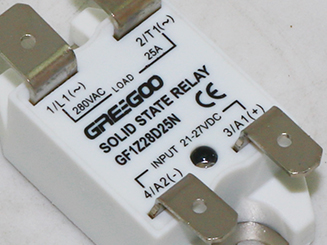Comparison of Solid State Relays and AC Contactors in Terms of Instantaneous Current Withstand Capability
In terms of instantaneous current withstand capability, solid state relays (SSR) and AC contactors perform differently:
Solid State Relays (SSR)
- Limited Instantaneous Current Withstand Capability: SSRs typically have lower instantaneous current withstand capability because they rely on semiconductor devices (such as thyristors or triacs) for switching operations. These semiconductor devices are prone to damage under overcurrent conditions, so SSRs usually require additional protective measures, such as fast-acting fuses or overcurrent protection circuits.
AC Contactors
- Higher Instantaneous Current Withstand Capability: AC contactors generally have higher instantaneous current withstand capability because they use mechanical contacts to carry current. These contacts can withstand large current surges for short periods, making them suitable for applications requiring high instantaneous current carrying capacity.
Therefore, in applications that require handling high instantaneous currents, AC contactors are usually more suitable than solid state relays. However, the specific choice should also consider other application requirements, such as switching frequency and environmental conditions.


Protective and Measuring Transformers for Medium-Voltage Equipment
Indoor support-type current transformer in block-type design
Read More
Benefits of Pressure Contact Construction in SEMIPACK Thyristor Modules
Solder-free assembly offers several advantages over soldered (e.g., SEMIPACK 1) and bonded (e.g., SEMIPACK 0, 2, 3) constructions, particularly in high-power applications such as converters, regulators, and industrial controllers.
Read More
Exploring the Unique Features of the GHFVC-160A/5kV Vacuum Contactor - 400Hz, Magnetic Latching and Rail Applications
400Hz high-frequency design, magnetic latching mechanism, and optimization for rail applications
Read More
Mini Puck Solid-State Relay: A Compact and Reliable High-Efficiency Switching Solution
The GF1 solid state relay uses back-to-back thyristors for switching, which are more durable than traditional triacs.
Read More













